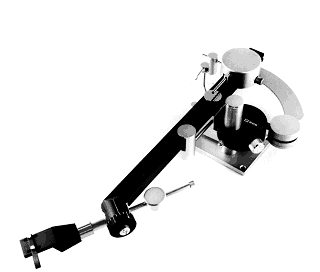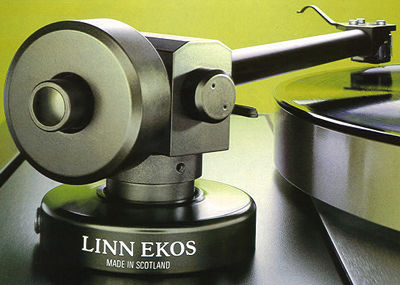The ARO is one of the most unusual performance-focused tonearms ever built, reputedly made “hand in glove” for the Linn Sondek LP12 turntable and Troika cartridge. The narrative begins in 1987, when Naim Audio decided to end its particular partnership with Linn Products; Linn was a manufacturer of electronics (remember the LK1/LK2? Some might not! ), while Naim was a manufacturer of loudspeakers. The LP12 was still the most musical turntable on the market, according to both companies. Linn was delighted to sell you the Ittok tonearm, and the Ekos was going to be released – but Naim wasn’t persuaded it was the universal panacea that many journalists promised…
The ARO (anagram of ‘Analogue Rules Okay,’ according to legend) arrived to astonished stillness. Unipivot tonearms were a conceptual reversal of the conventional wisdom at the time. Let us not forget that the world was preaching rigidity at the time since the turntable was thought to be a ‘closed loop’ where energy should not be allowed to escape. This wasn’t exactly exemplified by a tonearm bearing that was unipivoted!
The ARO, designed by Guy Lamotte, a Frenchman, brought some innovative thinking to the table. The armtube is made of arrow-straight precision aluminium alloy, the counterweight is set low to lower the arm’s centre of gravity below the pivot point (reputed to provide about 6dB of mechanical damping of the stylus), and the bearing is inverted compared to standard unipivots, with a sharp tip inside that sits on top of the turntable mounted cup, which serves as a mechanical ground.
If that wasn’t strange enough, the headshell added a whole other level of craziness. Because the ARO only has three holes for Linn’s three-point mounting cartridges (Troika, Archiv, etc.), there are no slots for cartridge alignment and no sled-style configuration like the SME. According to Naim, the extra structural rigidity provided by fewer cut-outs in the headshell has a greater positive impact on sound than the negative impacts of wrong overhang adjustment. This does not convince me.
In reality, misalignment isn’t that common – Linn cartridge mountings are roughly 7mm away from the stylus, while others seldom reach 10mm. Even with slots, it’s absolutely possible (and many people do) to get your cartridge 3mm out, and it’s also likely that it won’t be parallel to the headshell, adding to the potential for acoustic issues. If you’re really concerned, a machine shop could drill a pair of additional holes 3mm back from the originals, or you might just contact the cartridge maker for more information.
Despite its cumbersome appearance, the ARO is easier to set up than you might think – the key benefit is that once you’ve detached the little signal line plug, the entire arm assembly can be lifted from the arm base. This makes installing cartridges a breeze. Drop the arm onto the base, hook up the cable plug, establish downforce using the Ortofon stylus balance provided, and set the azimuth in the headshell to 45 degrees once you’ve bolted the cartridge into the holes provided(!).
The ARO is smooth, sweet, seductive, and musically coherent, although it sounds fluffy in comparison to other rival super arms. Still, after you get used to its personality, you’ll fall for its attractions and find other arms a touch finicky and cold. The ARO’s essence is its outstanding midband, which is not only spatially well proportioned but also elegantly carried in terms of time and dynamics. The arm sings incredibly articulately, with every vocal phrase and minute inflection of intonation communicated with ease, as if on a roller coaster. The music is marvelously ‘all of a piece,’ and each element of the mix comes together in a captivating yet convincing way.
The drawback is that it sounds rolled off up top and soft down below at the frequency extremes. It lacks clarity in the treble and tautness in the bass, which are typical unipivot characteristics, when compared to the rival Ittok LVIII of the time. It also lacks the booming, driving bass, however the Naim compensates for this with pure tunefulness. Interestingly, numerous discriminating Linn LP12 customers have ended up with an ARO after trying a variety of ostensibly better, more expensive, and more incisive tonearms. Having one is, in my opinion, a sign of a knowledgeable listener who prioritizes musicality over everything else. Isn’t that what a great tonearm looks like?







